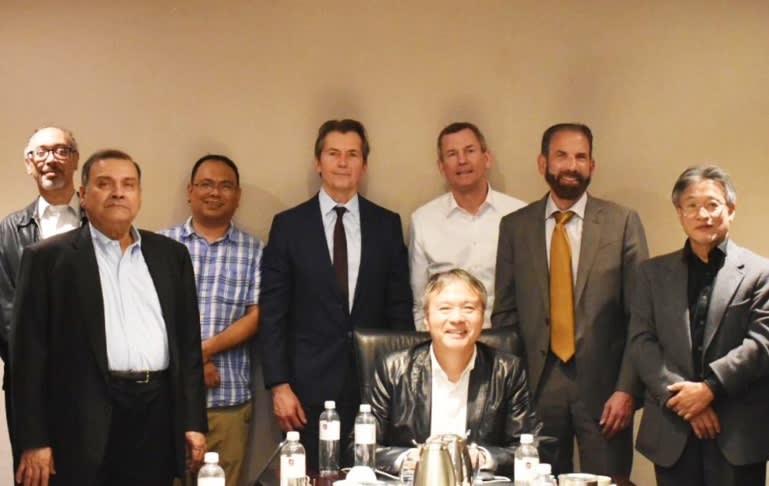Kubota glasses Japan – price and technology : Kubota Pharmaceutical Holdings will market Kubota Glasses, a wearable device that treats myopia, as early as the second half of this year.
The spectacle-style device treats nearsightedness by projecting images onto the retina using LEDs. Half of the global population is expected to be nearsighted by 2050, according to the World Health Organization. The company aims to introduce the product overseas as well as in Japan, beginning in Asia.

Myopia is generally caused when the distance between the cornea and retina — the axial length of the eye — increases, focusing images in front of the retina and making vision blurry. In Kubota Glasses, LEDs around each rim project images through prisms and mirrors on the lens. By projecting the image slightly ahead of the cornea, the system makes the axial length shorter, improving nearsightedness as the eye adjusts, according to the company.
The technology for Kubota Glasses was conceived of by President Ryo Kubota, 54, an eye doctor. He listed Kubota Pharmaceutical Holdings, which develops drugs and medical equipment, on the Mothers market of the Tokyo Stock Exchange in 2016, aiming to stabilize its management foundation, increase its presence and make it easier to hire specialists capable of making products at higher technological levels.
Joining Kubota between 2018 and 2019 were Amitava Gupta, a 74-year-old U.S.-based engineer from India, and Masakazu Watanabe, 66, who is now in charge of the management of development.
“Mr. Gupta has a wealth of knowledge of optics and engineering,” Kubota said. “He was essential for the development of Kubota Glasses.”
“I first met Dr. Ryo Kubota in 2018,” Gupta said. “In my first meeting with him, he impressed me by his innovative ideas on treatment of … retinal diseases.”
The company faced difficulty in three phases of the process to make Kubota Glasses a workable product: research, product development and obtaining a license.
President Kubota and Gupta began with basic research.
The initial difficulty was in selecting the kind of images to project onto the retina. They experimented with colorful images, monochrome images, and complex or simple geometric shapes. According to Kubota, Gupta is “a type of person who likes to be immersed in research from morning till night.” The company finally selected relatively simple images, although it has not revealed the details.
The next step was product development based on the basic research results. The idea for the latest Kubota Glasses model was to make them wearable for two hours and by even small children. Initial prototypes had a desktop-system design, but it was difficult to make small children sit still and look for a long time. The prototypes eventually evolved into helmet styles and then spectacle styles.
The developers faced particularly high hurdles in making the spectacle-style design. It had to contain batteries and wiring and yet be comfortable enough for small children to wear for several hours. Gupta continued to make modifications, selecting optimal LEDs and tweaking design details.
The final hurdle was in obtaining licenses to make and sell the product. As Kubota Glasses affect the functioning of the eye, the product had to be licensed as medical equipment. Watanabe’s expertise came in handy here. Complicating this was the different licensing processes in Japan and abroad. The company needed to create perfect documentation for each.
Watanabe, who used to be in charge of development management at Alcon, a major Swiss ophthalmological instrument company, is experienced in dealing with administrative authorities in different countries. At Kubota Pharmaceutical Holdings, he supervises research on drugs and development of medical equipment. He checks licensing requirements in different countries and lets President Kubota and Gupta know so they can adjust specifications.
“Mr. Watanabe is very precise,” Kubota said. “He helps make Kubota Glasses that I and Mr. Gupta have designed into a form that can be sold.”
There is a clear-cut division of roles between the three of them. Kubota comes up with one idea after another, Gupta concentrates on designing the product and Watanabe calmly manages the process. They took advantage of their respective strengths and finally applied for licenses for Kubota Glasses.
“The strength of our teamwork is reflected in the swiftness of development,” Kubota said. “We were able to reach the application stage in just a few years from the start of development.”
The results of an application submitted in Taiwan will come out soon. If the product is approved there, Taiwan will become the first market where it will go on sale. The company plans to sell it for several hundred thousand yen (several thousand dollars). In Japan, the company plans to begin consulting with the Pharmaceuticals and Medical Devices Agency this year on a license application. It has not yet worked out a detailed schedule on the application, expected approval date or when the product can be introduced in Japan.
As screening is relatively strict in Japan, the company aims to set a precedent by introducing the product elsewhere in Asia and then seek licensing in Japan. The company is also working on a project to develop a contact lens-style product. The teamwork of the three men will continue.












